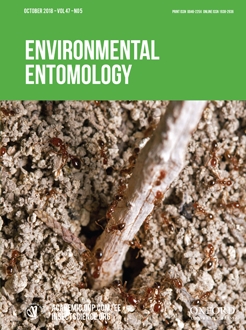Nectar larcenists extract nectar from flowers without pollinating them. A reasonable expectation is that any form of nectar larceny should have a detrimental effect on the plant's reproductive success. However, studies reveal an entire range of effects, from highly negative to highly positive. This variation in effect may be partly explained by additional, unmeasured, effects of nectar larcenists on plants. In a study system where two ant species Tapinoma melanocephalum (Fabr.) (Hymenoptera: Formicidae) and Trichomyrmex destructor (Jerd.) (Hymenoptera: Formicidae) act as nectar larcenists, we examined the effect of larceny on the female reproductive success of Clerodendrum infortunatum Gaertn. (Lamiales: Lamiaceae) in rain forest fragments of the Western Ghats, India. This was done through a combination of field observations and a series of field experiments looking at the effects of excluding ants from inflorescences. We found that T. destructor reduces fruit set considerably. Rather than this being a consequence of nectar larceny, however, our experiments show that the negative effect arises instead from the herbivorous behavior of the ant. At a population level, both ant species prefer edges over interiors of forest patches, spatially concentrating the interaction zone to forest edges. Simultaneously considering multiple ecological interactions and disentangling their relative contributions might explain the large variation across species in the observed effect of larceny. The overall population effect of nectar larceny and herbivory is likely to depend on the spatial structuring of plants and ants.
How to translate text using browser tools
28 June 2018
Ants on Clerodendrum infortunatum: Disentangling Effects of Larceny and Herbivory
Amritendu Mukhopadhyay,
Suhel Quader
ACCESS THE FULL ARTICLE
It is not available for individual sale.
This article is only available to subscribers.
It is not available for individual sale.
It is not available for individual sale.

Environmental Entomology
Vol. 47 • No. 5
October 2018
Vol. 47 • No. 5
October 2018
herbivory
nectar larceny
nectar thievery




